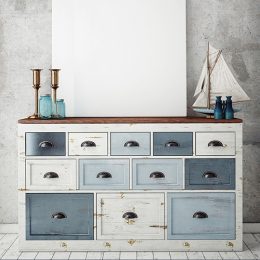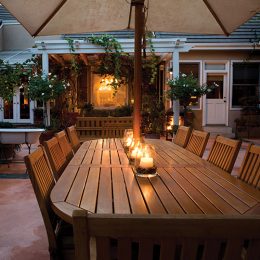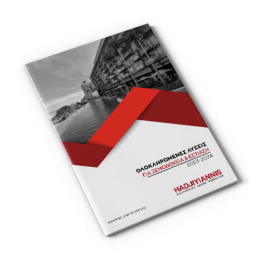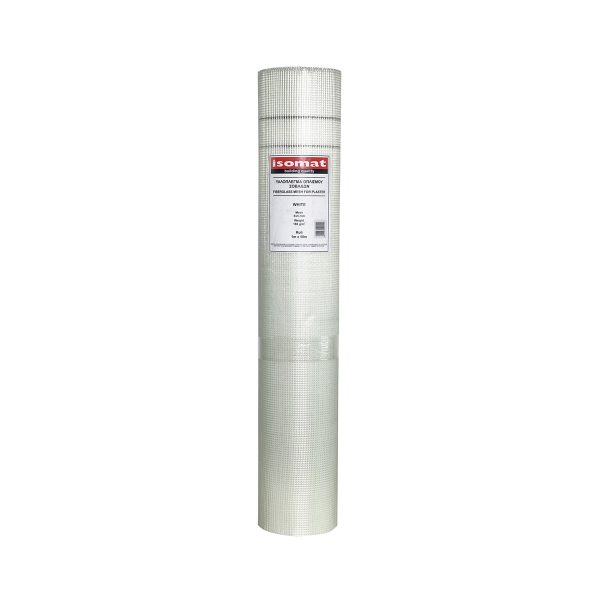Greater comfort, smaller bills. What would you say to saving energy and money, while at the same time renovating your house’s outer appearance?
With our certified external thermal insulation systems, you get to enjoy these, along with many other advantages that will improve your building, raising its market value, as well as your quality of life.
The external thermal insulation systems contribute to saving energy and money, since thanks to them, energy consumption for air-conditioning in the summer and heating in the winter is reduced, while you get to enjoy thermal comfort in your house throughout the year. External thermal insulation solves the issue of thermal bridges, which are mainly due to construction mistakes or the bad usage of materials, protects your building’s structural elements, while also regulates the interior air quality.
Finally, it’s a great solution for the renovation of old buildings, since the colorful pasty plasters that are used as final coatings, and which are available in a wide variety of hues and levels of granularity, can create aesthetically pleasing facades.
External thermal insulation consists of the insulating material (expanded polystyrene or extruded polystyrene), the glue that is also the coating material for the thermally insulating material, and the final colorful pasty plaster, which can be plaster, acrylic or silicone and is used as the final layer combining plaster and paint in a single coat. These fundamental materials are framed by special equipment that are necessary for the joining and support of the above (fiberglass, mounting plugs, corner caps, joints, etc.).
Please note: The basic parameter for the success of the external thermal insulation system is in the materials used. It should be understood that we refer to a complete and certified external thermal insulation system, which guarantees that the materials are working together well, and have been certified as a whole by the appropriate European Union body.

MULTIPLE ADVANTAGES:
Energy and money savings: With the external thermal insulation systems, you achieve great energy savings both during the winter, by needing less fuel to heat your house, as well as during the summer, by using less electricity for your air-conditioning. So, by reducing your energy costs, it pays for itself in the first few years after application.
Environmental protection: The external thermal insulation systems aid in the protection of the environment as they drastically reduce air pollution from using fuels to heat or cool the building. Specifically, they help reduce the emissions of carbon dioxide and other pollutants, like sulfur and nitrogen oxides which are considered responsible for the greenhouse effect.
Energy shielding: With the external thermal insulation systems, you eliminate any thermal bridges and the building becomes thermically protected from all sides, which has the result of achieving the most stable temperature possible throughout the year. This way, you enjoy thermal comfort in your house, in winter and summer.
Upgrade and protection: The external thermal insulation is a great solution for renovating old buildings. The buildings gain an elegant appearance because of our colorful pasty plasters. Additionally, they gain total protection from the wear caused by the changes in temperature, as well as complete impermeability.
Quick, easy, and guaranteed: The external thermal insulation systems are applied quickly, easily, and cheaply by trained and certified workers. During their application, the residents don’t need to move, while the neighbors aren’t disturbed. The Isomat Thermosystem systems have a 10-year warranty from Isomat.
External thermal insulation systems Isomat Thermosystem
Isomat is giving an answer to the energy saving needs of households who want to reduce their operating costs, by creating the complete external thermal insulation systems series Isomat Thermosystems. The series has 3 different systems, which cover a wide variety of applications and needs.
- The Isomat Thermosystem Classic is the company’s most economical solution for external thermal insulations. It’s also water vapor permeable and allows the building to breathe.
- The Isomat Thermosystem Premium is the perfect solution for buildings with facades that have high demands for sturdiness and durability. It’s water vapor permeable and allows the building to breathe.
- The Isomat Thermosystem XPS increases the mechanical strength and impact resistance of a building’s facade. An additional benefit of the extruded polystyrene slabs is their very low water absorption rating.
On the same time, the external thermal insulation systems Isomat Thermosystem are a perfect solution for renovating buildings, since the building’s shell gets a new and elegant appearance thanks to the premade colorful plasters of the Marmocryl series, which are available in hundreds of unique hues. All these have the result of raising your building’s market value. The external thermal insulation systems Isomat Thermosystem are certified according to the ETAG 004 and the European Standard EN 13499 and have the quality guarantee of Isomat.

Easy application in six steps
1. We place the support guides around the building parallel to the ground and we anchor them in the layer underneath with special plugs.
2. Then, we apply the glue on the thermal insulation slabs in two ways: a) On the whole surface of the slab with a toothed spatula if the layer underneath is even, or b) on the edges of the slab and its center, in two or more spots, with a trawl, if the layer underneath is uneven.
3. The thermal insulation slabs are attached in horizontal successive rows, from the bottom to the top, in intersecting joints formation, to avoid cracking the final plaster.
4. The next day, we mechanically fix the slabs with plugs of a length depending on the thickness of the slabs and the layer underneath them. Then, we apply glue as trawl material on the surface of the slabs.
5. We apply the glue with the toothed spatula in segments of >1 meter width. Then, we place the fiberglass and box it in the wet glue, pressing it with the smooth side of a spatula.
6. After the armed layer is dry, we prime it with a primer, depending on the plaster we will use. After the primer is dry as well, the final layer of pasty coating is applied.



















